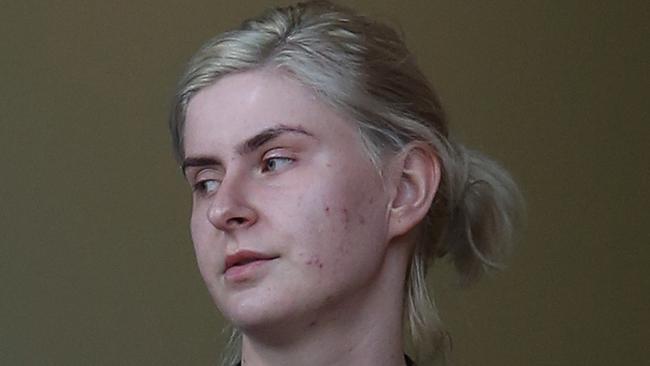Lawyer: Hair strands would have been ‘compelling evidence’
Hair strands found in the hands of a Brisbane mother who was bludgeoned to death in her bed could have revealed the identity of her killer, a court has heard.

Crime & Justice
Don't miss out on the headlines from Crime & Justice. Followed categories will be added to My News.
HAIR strands found in the hands of Radica Zafirovska who was bludgeoned to death in her bed could have revealed the identity of her killer, a court has heard.
Defence barrister Anthony Glynn QC said if the hairs had been tested it would have been “compelling evidence” but it was not sent for testing by police at the time.
In forensic examinations, he said police did a visual testing and were satisfied that there was no DNA that could be obtained. “But why not check?” Mr Glynn asked the jury.
Mr Glynn said the hairs in Radica’s hands suggested she was in “close proximity” with her attacker.
In his closing statement Mr Glynn QC said Radica’s daughter Simona couldn’t have killed her mother because no blood was found anywhere in the house but on the murder weapon.

Simona is on trial in Brisbane Supreme Court accused of the murder of her mother, to which she has pleaded not guilty.
“The whole absence of blood is amazing if in fact she is the perpetrator,” he told the court.
Mr Glynn said that a “significant splatter of blood” would have covered the attacker because of the brutal nature of the attack.
Simona’s clothing and police swabs taken from her hands and feet found no blood.
The crown prosecutor submitted the accused could have showered and changed her clothes after allegedly killing her mother.
Yet Mr Glynn said the evidence did not support the claim because no blood was found in the drains, showers and sinks nor on the defendant’s clothes and hair.
He said there was no blood found at the crime scene because an “intruder” was the one who committed the crime.
“Whoever had blood on them well and truly departed the scene,” he said.
He said given the violent nature of the attack and the fact that a plank was used as a murder weapon, markings should have been found on the perpetrator’s hands.

Yet police found no markings on Simona’s hands and her “nail extensions” were still intact.
“Given the apparent ferocity of the attack you would expect to see some damage to her hands and fingernails,” Mr Glynn said.
In his final submissions, crown prosecutor David Meredith said Simona knew she was the “sole beneficiary” of her mother’s estate and would “benefit” if she were to die.
Mr Meredith said Simona had a motive to kill her mother because her mother didn’t approve her relationship with her boyfriend who she was “obviously keen on”.
He said this was proved by the 28 calls made between Simona and her boyfriend on the night of October 27th, her tattoo of his name, and earrings emblazoned with his initials.
In his closing submission, Mr Meredith said friends of Radica said the mother and daughter had argued over Simona returning early from a Macedonia holiday to continue her university studies.
“We know that Radica was keen for Simona Zafirovska to finish her studies and said she has threatened her and unless she continues, she would not support her,” he told the court.
He also said that Simona made three quotes for flights, with two of them being one-way tickets, to Macedonia in October 2016.
“While she might not go ahead of them, she clearly has an interest to travel. The desire to travel apparently against her mother’s interest,” he said.
The trial continues.


